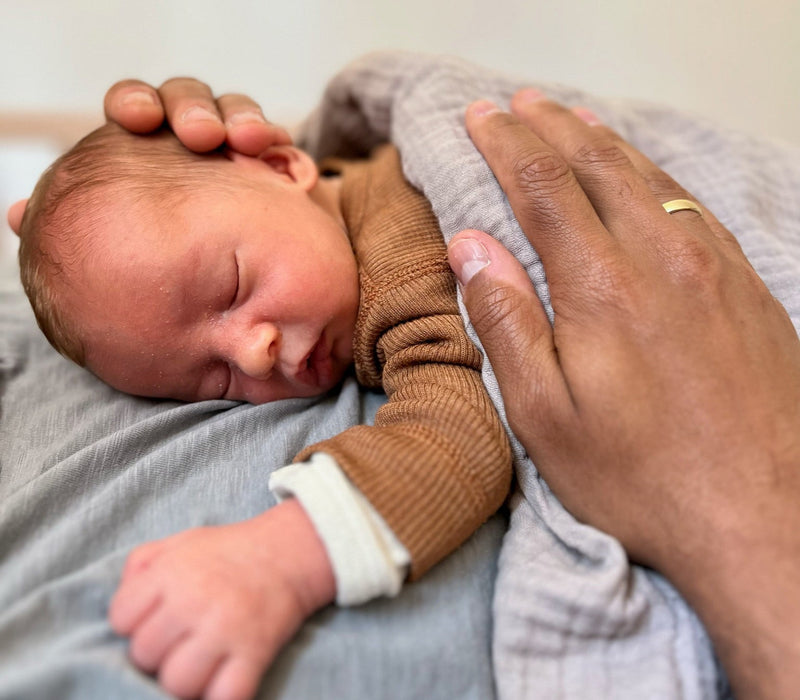Swallowing, everyone knows that from their own experience and from film and television! In medical jargon, this is called a foreign body aspiration. A
Foreign objects slip into the trachea and smaller objects even deeper up
into the pulmonary branches.
frequency
It is felt that this primarily affects middle-aged people who are rescued by the so-called Heimlich maneuver when they suddenly become short of breath. However, this is not the most common case, because foreign body aspiration occurs particularly in children between the ages of 6 months and 5 years. Because from the age of 5 to 6 months, children put everything in their mouths. They do this because the sense of touch through the mouth is much better developed at this age than the sense of sight.
Children feel their surroundings with their mouths. Something can quickly get into the trachea and trigger the typical coughing fits. The
Incidentally, the frequency peak with approx. 50% of all foreign body aspirations is in the 2nd and 3rd year of life!
Typical foreign bodies
Typical foreign bodies that are aspirated are, for example, food such as nuts, grapes, popcorn, pieces of carrots or smaller toy parts such as beads, marbles, small wooden or plastic building blocks. are particularly dangerous
of course also sharp objects such as needles, screws and nails, as these can cause injuries and parts of foil or balloons, because these are very difficult to cough up.
prophylaxis
It is therefore particularly important to avoid foreign body aspiration from the outset. Foods unsuitable for babies and young children and others
Small parts should be stored out of reach and your child should only play with toys
leave that is approved for the appropriate age. You should too
stay with the child when it eats.
cough and shortness of breath
Since probably all of you have choked at some point, you know that the main symptom is a sudden onset of shortness of breath with a cough. The general rule is: the larger the foreign body, the more acute the symptoms of shortness of breath
Foreign bodies larger parts of the lungs no longer participate in breathing.
What can you do as a parent?
Acute shortness of breath is often a very stressful event for children and parents, and the resulting panic can make the critical situation even worse. It is therefore important to identify the cause quickly and to act immediately.
You should practice all of the measures discussed below before your child aspirates for the first time.
From our experience as emergency physicians, we know that most
Rescue service deployments in the event of aspirations could be prevented through trained and courageous intervention. We often arrive too late, since a lack of oxygen can lead to irreparable damage after just a few minutes. Annalena even recently saved a neighbor's child from choking on the playground quite suddenly. At the
You practice extensively with the help of our 12minutes online course and the emergency training dummy. There we train the maneuvers in detail with you and her
also gets more in-depth information.
The procedure differs depending on how serious the
foreign body aspiration. If your child only coughs a little and breathes normally in between, screams, cries or talks to you, there is probably no immediate danger. This is then referred to as an “effective cough”. Just take a quick look into your mouth and try to remove any visible foreign bodies. But you should never feel for foreign bodies in your throat that you can't see. If the cough is effective, you should wait until the foreign body is coughed up on its own. Nothing is like that
effective as your own cough to remove the foreign body. Blows to the back are now more of a distraction. So encourage your child to keep coughing and
monitors it continuously.
Acute danger to life: Ineffective cough
When the child's cough becomes ineffective, danger is at hand. You can recognize this by the fact that consciousness decreases, the coughing becomes quieter, the child no longer breathes properly to cough or speak, or you notice a blue discoloration of the skin. Then you absolutely have to alert the emergency services immediately and act quickly: As long as the child is conscious, it is best to lay it head down with its stomach on your forearm or lap and stabilize its head with your hand. Then you hit, dosed but strong, with the other flat hand on the back between the shoulder blades. You should repeat this a maximum of five times,
but the goal is to get rid of the foreign object with a single swipe rather than taking many of them. If the blows to the back do not dislodge the object, you may need to do up to five head-down chest compressions in children under one year old.
Heimlich maneuver
For children over the age of one, you should perform the Heimlich maneuver up to five times after the five slaps on the back. During the Heimlich maneuver, the pressure in the lungs is greatly increased by several jerky upper abdominal compressions in order to eject the foreign body. You absolutely have to practice this in practice! The five punches on the back and the Heimlich maneuver, or the
Chest compressions in children less than 1 year of age are repeated in rotation until there is an effective cough or until the foreign object is removed.
Worst case scenario - resuscitation
And if at some point the lack of oxygen becomes too severe, it can lead to loss of consciousness and cardiac arrest. Once the child is unconscious and not breathing, you must begin CPR.
Conclusion
Foreign body aspiration is common! Our twins also regularly choked while eating, but fortunately they managed the leftovers effectively
cough up Knowing the theory is one thing, but only those who have practically practiced the maneuvers will be able to really help in an emergency.
dr medical Annalena Dehe and Dr. medical Luke Dehe
12 minutes
First Aid Course for Babies & Toddlers
Annalena and Lukas have set themselves the task of making first aid for babies and toddlers accessible at all times and have created an online course offer with their company 12minutes, which has never existed before.
If you want to learn more about it, check out our post on the course. Here you will find more information about the content and video sequences of what to expect in the course.
We love the content from the experts, but above all the flexibility that such a course offers. You have access for 3 years, you can share with grandma/grandpa, babysitter or other people who spend a lot of time with your child and watch the modules as often as you like until you feel safe.



